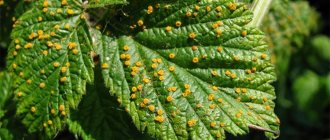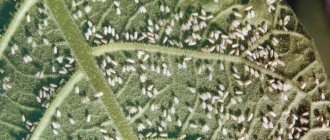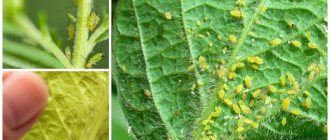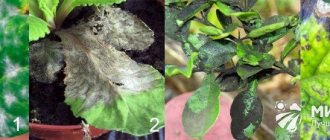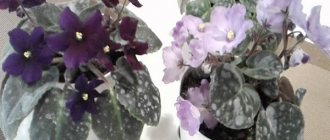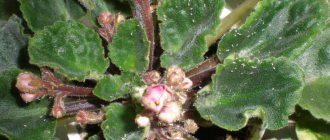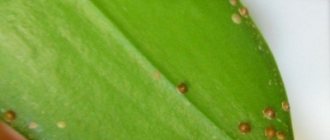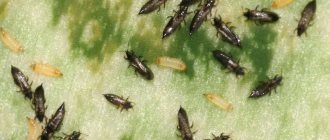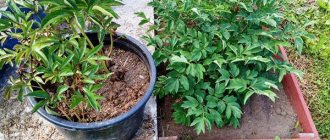There are a variety of diseases of indoor flowers, some of them are complex, requiring a special approach to treatment and preventive measures in the future. Rust is a disease of indoor plants - rare, but dangerous, capable of destroying a flower. The name of this flower disease is explained by the appearance of the lesions: red and brown spots appear on the leaves of houseplants, slightly convex and as if fleecy. In fact, it is a fungus. Treatment of domestic flowers affected by it is long and complex. It is imperative to reconsider the conditions in which the plant is located and the care regimen.
How to get rid of rust on plants
Good afternoon, dear readers!
When growing vegetables and fruits, as well as flowers, in garden beds, we often encounter plant diseases. One of the most common and painful problems for summer residents is plant rust. Rust can affect not only agricultural plants, but also decorative ones. Some of the crops most susceptible to rust are conifers and legumes. Flowers such as roses, gladioli, chrysanthemums, marigolds, azaleas and many others are also susceptible to this disease. The cause of this scourge is microscopic parasitic fungi. They spread thanks to moist warm air and water droplets on plants. We note that plants grown outdoors are less susceptible to disease. House plants suffer from this infection much less. As you can see, rust appears on plants quite often. And proper treatment will help eliminate this problem. And this is exactly what we’ll talk about in today’s publication.
How to recognize rust on plants
If you don’t know how to recognize rust on plants, then in this part of the article we will answer this question in detail. Plants usually develop stripes of yellow or brown color. Most often this phenomenon occurs in wet weather. These pimples on the leaves burst and a rusty mixture comes out, which is a fungus or infection. These fungi can be found not only on the surface of plants, but also penetrate inside, which makes the process of healing plants more labor-intensive and lengthy. Rust mainly appears inside the petal of the plant, but can also be observed on the trunk and on the upper surface of the leaf. Infected leaves most often die and fall over time, and the shoot trunk takes on the appearance of a “wounded fighter” with deep lesions.
How to properly deal with and prevent rust
If rust appears on your plants, then you should know how to deal with this phenomenon. And if you don’t know how to do this, then our article will definitely answer this question. In order to prevent your plants from rusting, you must follow the rules of growing plants. Basically, you need to monitor regular watering and air temperature. When spring comes, you should carefully inspect the trunks of the plants to ensure there is no damage. If you find wounds on the shoots, it is better to remove them, and clean the tree trunk to healthy wood and treat it with a fungicide. This work will help avoid infections in the summer.
If you find rust on the leaves, it is better to cut off the damaged shoots and completely treat the plants with protective agents.
As for ornamental (indoor) plants, it is better to do the treatment outdoors. For treating plants against rust, a copper-soap solution works best. For 1 liter of water you need to add 20 grams. soap and 2 gr. copper sulfate. Pour this mixture into a spray bottle and spray the plants. To spray plants against rust, you can purchase ready-made products such as copper oxychloride, Bordeaux mixture, Cuprozan and Topaz. When treating plants, make sure that the solution gets on the back side of the foliage. The initial stage of plant disinfection must be carried out before flowering, and the second - after flowering. After a couple of weeks, the procedure must be repeated.
Finally
You probably understand that rust is a serious plant disease. Therefore, it is important to use all available means to combat this phenomenon. In any case, we wish you good luck in this matter.
Delicate scattering of flowers
Perhaps the blooming violet is one of the most beautiful indoor flowers. It grows and “produces” rosettes at an incredible speed.
Fusarium . The roots, leaf petioles, and bases of flower stalks rot.
Change the soil, reduce watering, and do not reduce the air temperature in the room and on the windowsill below 15°C.
Destroy diseased plants and soil, sterilize pots. For healthy specimens, water the soil with microbiological preparations “Gamair” or others.
Powdery mildew . It appears on Saintpaulia as a white powdery coating on the leaves, peduncles and flowers.
Avoid drafts and sudden fluctuations in room temperature, and protect plants when ventilating the room in winter. Treat Saintpaulia with an ash-soap solution prepared as follows: pour half a glass of ash into 1 liter of boiling water, leave for 2 days, strain, add liquid soap.
Diseases of non-infectious nature . Yellow ring spot appears when watered with cold water in a draft or in direct sunlight. The curling of leaves upward is caused by high acidity of the soil. The appearance of small pale leaves on long petioles is caused by a lack of sunlight.
Grow Saintpaulia on a loose, fertile substrate, pH 6–7. Keep it at a constant temperature of 20–24°C without changes and drafts, protect from direct sunlight.
How dangerous is the disease?
Yellow pollen, that is, a fungal spore (of the genus Phragmidium or Puccinia), causes the death of the leaves of indoor plants, and in particularly “neglected” cases, other parts. With a lack of sunlight, heat and fresh air, the plant’s “immunity” and ability to survive in the winter may decrease.
Indoor plants with “rust” on the leaves are diagnosed with impaired metabolism, the process of photosynthesis, and moisture absorption. In such plants there is a sharp decrease in the formation of shoots or the absence of them at all. If the disease on the leaves is not treated, it will quickly spread to all organs and the indoor flower will die.
Causes
Rust is a fungal disease, and it appears for the same reasons as any other fungus. Plants that are forced to survive in uncomfortable, unsuitable conditions are primarily susceptible to disease. Rust is usually caused by:
- Excessive watering, especially in the cold season. Many indoor flowers have a pronounced dormant period, and during this time watering must be reduced or stopped altogether. And if the room is cool, you shouldn’t overwater even those plants that don’t need rest - excess moisture will inevitably lead to hypothermia of the root system and the development of various diseases.
- Abuse of nitrogen fertilizers. A high concentration of nitrogen in the soil always weakens the plant, making it susceptible to pathogenic microorganisms, so you need to fertilize flowers strictly according to the instructions, remembering the golden rule: it is better to underfeed than to overfeed. In winter, fertilizing is not needed at all.
- Lack of light and fresh air. Without good lighting, not a single indoor flower can live - if the plant is constantly in twilight, it will begin to wither and get sick. The same applies to fresh air - regular ventilation is necessary not only for people, but also for plants.
- Neglect of basic care rules. If the owner of the collection does not take the trouble to periodically wash the leaves of the plants, quarantine newly purchased flowers, treat the soil and disinfect the pots before replanting, his plants will most likely acquire many diseases, including fungal ones.
How to diagnose rust?
It is quite easy to determine that rust has “settled” on the leaves. The first and most basic sign that the disease manifests is a red, oval-shaped pad. After several days, the number of pustules increases sharply, filling all the free space on the leaves.
In order for the fight against rust to begin in a timely manner, you need to know the possible locations of the pustules:
- leaf;
- stem;
- box with seeds;
- calyx of inflorescence.
Red spots and stripes are most often attached to the underside of leaf blades; much less often they can be identified on the stem and petiole. If the disease appears on the upper side of the leaf, the pustule may have a light yellow color.
The superficial location of the fungus provokes excessive evaporation of moisture, premature drying and death of the leaf.
Methods to combat plant rust
Treatment for rust should begin as early as possible. At different stages of disease development, methods against rust differ. If you start fighting the disease right away, it will be enough to cut off the infected leaves and destroy them.
At later stages, when the pustules have had time to multiply, experts recommend using special anti-rust preparations to combat living fungal spores in all infected areas of the plant.
It is important to know! Treatment of indoor plants is carried out only with special protective gloves that prevent the penetration of the drug onto the skin.
The most effective drugs in the fight against the disease:
- 1% Bordeaux mixture (a mixture of copper sulfate and lime powder).
- Topaz.
- Abiga Peak.
- Baktofit.
- Fitosporin-S.
It should be noted that a one-time treatment of the plant may not be enough to completely cure the disease. Young (resistant) pustules with spores are able to survive after treatment. Therefore, experts recommend re-processing the plant after 7-14 days.
Also, do not forget that you can completely get rid of the disease only if the cause and method of infection are identified in a timely manner. Experts say that most often indoor plants get rust from coniferous trees. It is not for nothing that most disease epidemics began precisely after the New Year holidays.
Most conifers are intermediate hosts. They are resistant to the disease, since the affected needles on coniferous trees fall off and do not require special spore control.
Subtleties of spraying infected plants
- When fighting fungal spores, experts do not recommend additionally irrigating the plant, since the effectiveness of treatment decreases, and water contributes to a greater spread of the disease.
- To prevent the chemical solution from getting on neighboring “healthy” plants, spraying should be carried out in an isolated space. Upon successful completion of each spraying, you need to rinse all components with water to prevent the chemical from getting on people or animals.
- Store chemicals only in a cool, dark place out of reach of children.
Pests
Various types of pests can also oppress plants. They feed on cell sap, which causes flowers to wither. To detect them, you should carefully examine the shoots and the lower surface of the leaves.
Pests can also settle on the roots. However, in this case, you should not rush to check, otherwise you may damage the root system. You should rule out all other options first.
If parasites are found, you should start fighting them as early as possible. Otherwise, they can destroy not only this flower, but also move to neighboring ones.
First of all, the diseased plant must be isolated. Then wash the leaves with soapy water, treat them with pest control chemicals and replant them in a well-washed or new pot.
How to properly organize prevention
An effective means of combating rust is the organization of periodic prevention of the disease. To reduce the risk of contracting the disease, you should:
- Strictly follow the recommended calendar for introducing nitrogen fertilizer into the root and foliage systems.
- Plant plants in a timely manner.
- Water indoor plants on a schedule.
- Eliminate plant residues from flowerpots.
- Minimize contact between house plants and coniferous trees.
By using special anti-rust preparations in a timely manner, you can save more than one indoor flower, but also protect your “green corner” from total destruction.
